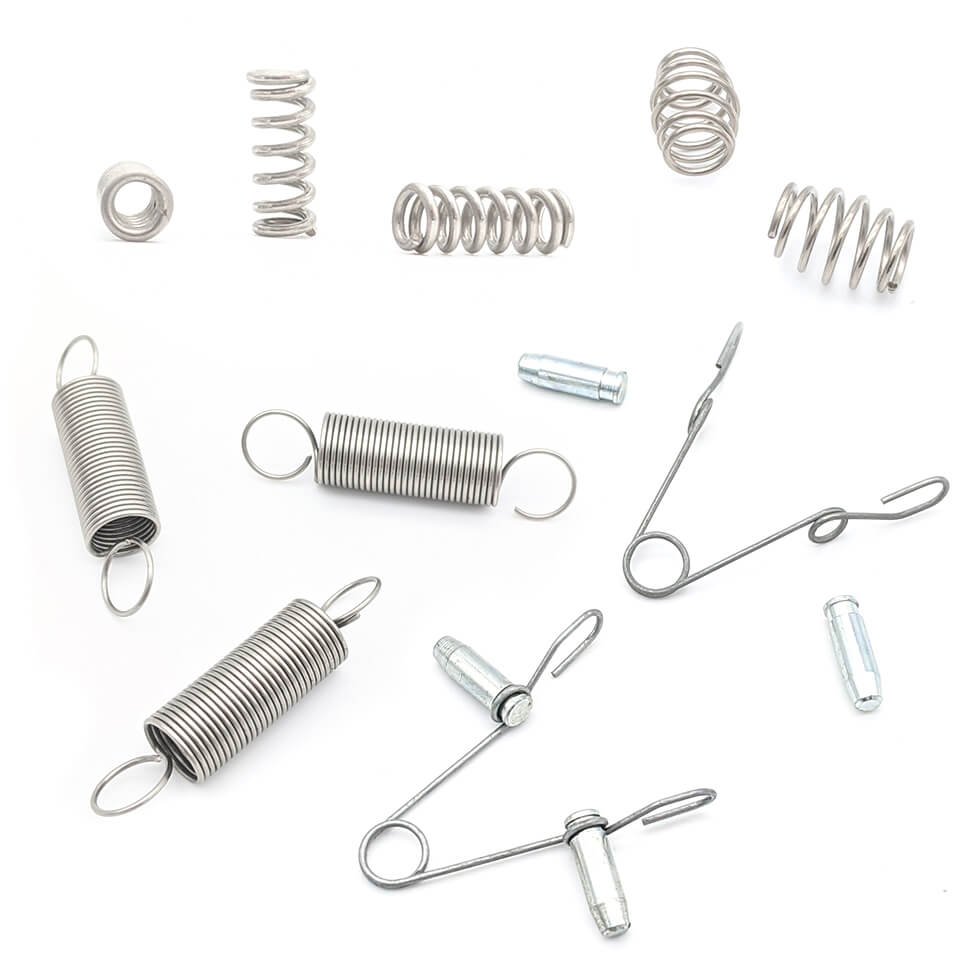Get unique, complex parts easily. No matter your requirements, Chaoyi Spring creates hard-to-produce coil springs and wire forms.
Let us help you create the custom wire form you need, from S-hooks and J-hooks to utility hooks and more.
We work closely with customers across a wide range of industries, helping them design and manufacture made-to-order parts.
Why choose Chaoyi Spring? We prioritize customer-focused collaboration, modern equipment and the latest technology to make your parts per print.
Find the information and guidance you need, from measuring a spring to learning about materials, placing an order and much more.
Compressed springs, also known as compression springs, are essential components in a wide range of mechanical systems. They are designed to store mechanical energy when compressed and release it upon


Compressed springs, also known as compression springs, are essential components in a wide range of mechanical systems. They are designed to store mechanical energy when compressed and release it upon decompression, providing a reliable and efficient force for various applications. From simple mechanisms like door hinges to complex industrial machinery, compressed springs play a crucial role in ensuring smooth and reliable operation.

A compressed spring is a helical coil made from a resilient material, typically steel, that exerts a force when compressed. The force exerted by a compressed spring is directly proportional to the amount of compression, following Hooke's Law. This relationship is fundamental to understanding the behavior and application of compressed springs.
Compressed springs are designed with various parameters, including wire diameter, coil diameter, spring index, and number of coils, which influence their spring rate, force, and deflection characteristics. These parameters are carefully selected based on the specific application requirements.
Compressed springs offer numerous advantages that make them highly versatile and widely used components in mechanical engineering:
Compact Size and High Force: Compared to other spring types, compressed springs can achieve high force within a compact footprint. This makes them ideal for applications where space is limited.
Reliability and Durability: When properly selected and manufactured, compressed springs are known for their reliability and long service life. They can withstand repeated compression and decompression cycles without significant degradation.
Customizable Design: Compressed springs can be custom-designed to meet specific force, deflection, and size requirements. This adaptability allows engineers to optimize spring performance for specific applications.
Compressed springs find applications across numerous industries and sectors, including:
Automotive: Suspension systems, engine components, and door mechanisms.
Industrial Machinery: Presses, clamps, conveyors, and actuators.
Electronics: Push-button switches, keyboard mechanisms, and spring-loaded contacts.
Medical Devices: Surgical instruments, prosthetic limbs, and medical implants.
Aerospace: Landing gear, actuators, and satellite mechanisms.
Consumer Products: Pens, toys, and household appliances.
Compressed springs come in various forms and configurations to meet specific application needs:
Helical Compression Springs: The most common type, consisting of a helical coil made from a resilient material.
Torsion Springs: Designed to exert a force when twisted, often used in conjunction with compressed springs.
Belleville Springs: Conical-shaped springs that offer high force in a small space.
Variable-Rate Springs: Springs with a non-linear force-deflection characteristic, providing different forces at different compression levels.
When designing compressed springs, engineers must carefully consider various factors to ensure optimal performance and longevity:
Material Selection: The choice of material depends on the application requirements, including corrosion resistance, temperature limits, and required spring rate.
Spring Rate: The spring rate determines the force exerted by the spring for a given compression. It is crucial to select the appropriate spring rate for the intended application.
Deflection: The maximum deflection of the spring determines the maximum compression it can withstand without failure.
Stress and Fatigue: The design must account for the stress levels and potential fatigue failures that occur during repeated compression cycles.
End Configurations: The end configurations of the spring affect how it interacts with other components and influence its overall performance.
Compressed springs are essential mechanical components that provide a reliable and efficient way to store and release mechanical energy. Their compact size, high force, durability, and versatility make them ideal for a wide range of applications across various industries. Understanding the advantages, types, and design considerations associated with compressed springs is crucial for engineers to effectively select and implement these components in their designs, ensuring optimal performance and reliability.
In conclusion, compressed springs are indispensable in modern engineering, serving as a fundamental building block for numerous systems. Their ability to provide controlled force, reliability, and adaptability makes them a valuable component in a wide range of applications. By carefully selecting the right type and design, engineers can leverage the power of compressed springs to create robust and efficient mechanical systems that meet the demands of today's technological world.
Browse some of the custom wire forms and springs that we manufacture. Don’t see what you need? We specialize in made-to-order products that meet your application requirements.
Visit Our GalleryNeed a custom wire form or coil spring? We make it work. Fill out the contact form and a representative will respond within 1 business day. If you have a PDF or CAD file, you can submit to request a quote.